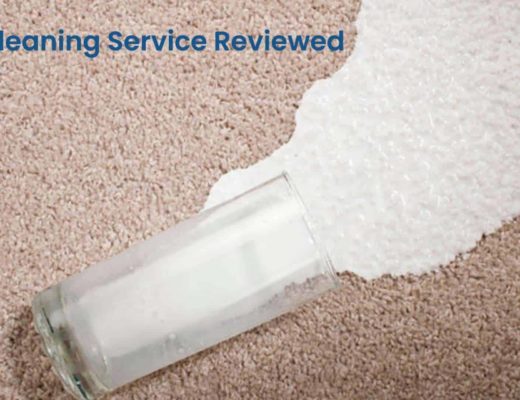Has your coffee been tasting weak and flavorless lately? It’s time to give your trusty coffee maker a deep clean!
Descaling eliminates the mineral buildup that happens in your machine over time. It’s essential to maintain the machine’s performance.
This detailed guide will tell you everything you need to know about how to clean your coffee maker. Here’s how you can get back to making a good cup of coffee every day.
What is descaling and why is it important?

Whenever you brew your coffee, minerals like calcium and magnesium can come from the water. And while they may not seem like a big deal, they significantly impact your machine’s performance.
Mineral buildup in your coffee maker can block the pipes and make it harder for the machine to heat the water to the right temperature. This can make your coffee weaker and less tasty and shorten the life of your coffee maker.
So, descaling is essential to ensuring you get the best cup of coffee possible.
What are the signs that your coffee maker needs descaling?

It’s important to know when your coffee maker needs to be descaled so you can take care of it before the buildup gets too bad.
Here are a few signs to look out for:
- Reduced brewing performance. Is your coffee taking longer to brew? Is the strength weaker than usual? If yes, it could indicate that mineral buildup is clogging up your machine.
- Strange noises. If your coffee maker makes strange gurgling or hissing sounds, it could mean mineral buildup.
- Slow or incomplete brewing. If your coffee takes longer to brew an entire pot or if the pot is only partially complete, the mineral buildup could be the culprit.
Tip: Consult your manual or a professional if you’re unsure about whether your coffee maker needs descaling.
Preparing to Descale Your Coffee Maker
Before you start the descaling process, gather the materials you’ll need:
- White vinegar
- Clean cloth
- Pot of water
It’s also important to unplug your coffee maker to ensure your safety.
Methods for Descaling Your Coffee Maker
There are a few different ways to clean your coffee maker. The most common method is using white vinegar.
Descalation with White Vinegar

- Fill the water reservoir of your coffee maker with a 50/50 mixture of white vinegar and water.
- Place a clean cloth underneath the coffee maker to catch any drips.
- Run a brew cycle.
- Turn off the coffee maker and let it sit for 30 minutes.
- Run another brew cycle with just plain water to rinse out the vinegar.
- Repeat this process until the water from the machine runs clear.
Descalation with Lemon Juice
- Squeeze the juice of two lemons into the water reservoir.
- Follow the same steps as above. Fill the water reservoir of your coffee maker with a 50/50 mixture of lemon juice and water.
- Place a clean cloth underneath the coffee maker to catch any drips.
- Run a brew cycle.
- Turn off the coffee maker and let it sit for 30 minutes.
- Run another brew cycle with just plain water to rinse out the solution.
- Repeat this process until the water from the machine runs clear.
Tips:
- If you prefer, use a coffee maker’s cleaning solution like Durgol, Urnex, and Dezcal instead of white vinegar or lemon.
- Different coffee makers may require a specific descaling method, so check your manual before you start.
Best Practices for Maintaining a Clean and Efficient Coffee Maker

In addition to descaling your coffee maker often, there are a few other things you can do to keep minerals from building up:
- Use filtered or distilled water. Hard water can result in mineral buildup, so using filtered or distilled water can help prevent this. Change your water filter regularly if you’re using filtered water.
- Run a cleaning cycle after each use. Flushing out any remaining minerals after each use can help keep your coffee maker in good condition.
- Store your coffee maker properly. When not in use, store your coffee maker in a cool, dry place to help prevent mineral buildup.
How Often Should You Descale Your Coffee Maker?
How often you clean your coffee maker depends on several things, such as how hard your water is and how often you use it.
As a general rule of thumb, it’s recommended to descale your machine every three to six months.
Descaling more often is recommended if you use your coffee maker daily or have hard water.
Tips to Successfully Descale your Coffee Maker

Here are a few tips to keep in mind when descaling your coffee maker:
- Be patient. The descaling process takes time, so don’t do it in a hurry.
- Use the right amount of vinegar or lemon juice. Too much or too little can affect the effectiveness of the descaling process.
- Don’t use hot water. Hot water can cause the mineral buildup to harden, making it more difficult to remove.
Troubleshooting Common Coffee Maker Problems

In case you run into any problems during the descaling process, here are a few tips to help resolve them:
| Common Descaling Problems | How to Fix Them |
| Coffee maker is still not working properly. | It could be due to other issues, like a clogged spray head or a malfunctioning heating element. Check the parts for clogs and run the coffee maker as usual. |
| Descaling solution isn’t properly mixed. | Ensure that your descaling solution is well-mixed before adding it to the water reservoir. |
| The cleaning solution isn’t fully emptied from the water reservoir. | After the descaling cycle is complete, make sure to empty the water reservoir completely to prevent any leftover solution from interfering with the next brewing cycle. |
| After cleaning, there are still mineral deposits in the coffee maker. | Repeat the descaling process or increase the concentration of the descaling solution, depending on the severity of the mineral buildup. Scrub the affected areas with a brush or sponge to remove stubborn deposits. |
| The coffee maker is leaking during the descaling process. | Check the water reservoir and make sure it’s securely in place. Inspect the water tank and brewing unit for cracks or damage. Replace any faulty parts. |
| The descaling process takes longer than expected. | The length of the descaling process can vary depending on the amount of mineral buildup in the coffee maker. Be patient with the process. |
| Strong vinegar or lemon juice smell | Run a few cycles of plain water through the coffee maker to rinse out any leftover descaling solution. Make sure to empty the water reservoir completely and clean the coffee maker thoroughly. |
| The coffee maker stops working after descaling. | Check the water reservoir and make sure it’s filled with water. Inspect the coffee maker for any signs of damage. If necessary, contact the manufacturer for repairs. |
| The descaling solution causes discoloration or staining. | Use a soft sponge or cloth to wipe away any discoloration or staining caused by the descaling solution. Rinse the affected areas thoroughly with water. |



